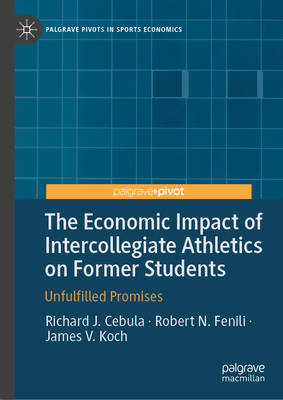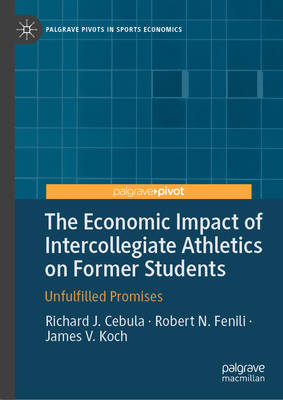
- Afhalen na 1 uur in een winkel met voorraad
- Gratis thuislevering in België vanaf € 30
- Ruim aanbod met 7 miljoen producten
- Afhalen na 1 uur in een winkel met voorraad
- Gratis thuislevering in België vanaf € 30
- Ruim aanbod met 7 miljoen producten
Zoeken
The Economic Impact of Intercollegiate Athletics on Former Students
Unfulfilled Promises
Richard J Cebula, Robert N Fenili, James V Koch
€ 68,95
+ 137 punten
Omschrijving
College graduates do not benefit economically from the intercollegiate athletic programs of their alma mater. Students provide substantial funding for their institution's intercollegiate athletic programs via tuition and fees. In fact, a typical student is required to pay for such activities. Will this financial burden paid for during undergraduate years help them in the real world? Whether measuring the incomes earned by alumni, their upward economic mobility, or their record in paying off federal student loans, there is no subsequent economic payoff to graduates of institutions that spend large sums of money on athletic programs. And, in all actuality, evidence suggests that graduates of campuses with FBS ('big-time") football programs end up earning less than graduates of comparable non-FBS institutions. The statistical analysis provided in this book is derived from a sample of almost 700 four-year institutions between 2004 and 2022. The authors present the information and provide analysis, focusing on five different measures of economic success the alumni (for example, the incomes alumni earn after graduating). The book uses this data to explain that there is either no definitive positive connection--and, in fact, there might be a negative relationship--between intercollegiate athletic programs and the economic success of their alumni.
Specificaties
Betrokkenen
- Auteur(s):
- Uitgeverij:
Inhoud
- Aantal bladzijden:
- 276
- Taal:
- Engels
- Reeks:
Eigenschappen
- Productcode (EAN):
- 9783032034526
- Verschijningsdatum:
- 31/10/2025
- Uitvoering:
- Hardcover
- Formaat:
- Genaaid
- Afmetingen:
- 148 mm x 210 mm
- Gewicht:
- 508 g

Alleen bij Standaard Boekhandel
+ 137 punten op je klantenkaart van Standaard Boekhandel
Beoordelingen
We publiceren alleen reviews die voldoen aan de voorwaarden voor reviews. Bekijk onze voorwaarden voor reviews.








